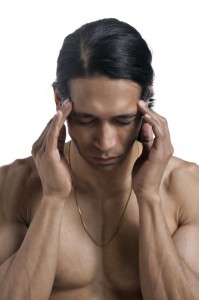Concussion
Concussions and there lingering symptoms can often last for for months or longer. I have had patients come into the office with symptoms like daily headaches, inability to concentrate and poor sleep that have lasted over a year or more. In the medical community there does not seem to have a unified consensus on how to best heal from concussion. Most of the advice seems like common sense: rest, reduce computer and television screen time, reduce homework or work load, exercise to tolerance and return to play when you are symptom free. Concussion prevention advice is even weaker. Athletes are told to buy better equipment and and get a base line neurological assessment so that they can detect a concussion earlier. It is often pointed out that a previous concussion is predictive of future concussions. It seems to avoid concussion, the advice is don’t get one in the first place. How is that prevention? To me this is a very passive and defensive way to both prevent and heal from a concussion.
Concussion Treatment
I have treated patients with acute and chronic post concussion syndrome. The approach that gets results is usually involves cranial adjusting, leveling the head and neck and treating other injuries in the body that can affect gait.

The sutures of the skull actually move rhythmically. These joints are often become stuck with trauma.
The cranial bones of the skull move in a rhythmic fashion with the rest of the spine and pelvis and can be accentuated by your breath. These ideas were discover by William Sutherland, D.O. a century ago. The movement occurs along joints called sutures which you can see as the squiggly lines on the picture of the skull. Cranial motion moves cerebral spinal fluid around the spinal chord and even out to the ends of the nerves coming form the spinal column. Here is a cool video of CSF flow under MRI. The cerebral spinal fluid is critical to healing because it brings nutrients to the tissues of the brain and nerves as well as helps move waste out. Increased CSF fluid pressure, which can result from poor flow, can can disrupt blood flow in the brain as well. With direct trauma there is more waste to move out and a desperate need for nutrition as the brain heals. Compromised CSF flow and blood flow is a very bad thing for people are trying to heal their brain. Physicians generally do not know you skull moves and fail to consider restoring its mobility from a blow to the head. Damage and pressure on the brain of course can affect the function of any part of the body. There is no more important chiropractic adjustment that can be done to affect the brain directly than cranials. I use Applied Kinesiology to locate which bones are no moving and with gentle rhythmic pressure restore motion. The relief from symptoms is sometimes immediate and sometimes takes a month or two as we treat the body. It all depends on a person’s state of health before the concussion. I usually tell the patient that when their skull starts moving its like the first day of the healing process. When their skull is locked it is like healing has been suspended until the cerebral spinal fluid starts circulating again. Looking for a practitioner who uses cranial techniques can drastically cut the time it takes to heal form a concussion.
As a chiropractor my primary focus is to help restore function to nervous system. A nervous system that can receive information from the body, process it appropriately and send the correct output is healthy. Injuries tend to interrupt your body’s ability to communicate with itself. Concussions usually come with other trauma especially with blows to the head. A foot ball player may suffer a concussion from a helmet to helmet collision but there will be an accompanying whiplash from the head going one way and the body another.
Whiplash is usually more than a sprain of the spine. There is usually strain and lingering inhibition of some of the muscles like the scalenes, upper trap or sternocleidomastoid. These traumatized muscles may not be painful after a few days but often remain dysfunctional. If for example the the SCM and upper trap are inhibited from the trauma on the right the muscle on the left will begin to pull the head to the left. This may result in pain pain the left side of the neck as those muscle become tight. What is just a significant about this example is that the eyes will not let the head tilt that far to the left during the day. It is however, exhausting for the brain to not let you fall over all day long. The brain is constantly and unconsciously trying to keep the head level by assessing combining all the information from the eyes, ears and body. When all the information is not making sense the brain cannot integrate the information well enough to give appropriate out-put. The result can be dysfunction elsewhere in the body. What if the neck wasn’t the only injury? Those injuries and even past injuries need to be to treated as well so that more effective integration of the nervous system is possible. That is a short statement but very important.
Once the cranial bones have been freed up and function has started to be restored to the rest of the body. You have to move the body to help connect the brain back to the injured areas and the rest of the body. I have used simple cross crawl exercises in the past to activate the whole body and synchronize the brain until I found something that I liked better. Power Kinetics developed by Dr. Eugene Charles is like cross-crawl for Superman! This is a challenging workout but I really like the way he integrates movement of the entire body and brain while reducing the risk of injury.
With a functioning body and normally moving skull additional aerobic exercise can be added at low intensities at first. Aerobic exercise delivers much needed blood flow to the brain for bringing healing nutrients which also removes metabolic wastes. If you are running or even walking you get the benefit of moving your body in a cross crawl pattern that helps integrate your nervous system. In the book, Spark: The Revolutionary New Science of Exercise and the Brain, John Ratey, MD convincingly lays out study after study showing that shows exercise is better than medication for depression, ADHD/ADD, managing stress, addiction and for anti-aging. Aerobic exercise builds neural connections so your brain can literally rewire itself and levels out neurotransmitters which can be responsible for a persons sense of well-being. This is a massive topic but for now this is just more proof that exercise is good for your brain especially when healing form concussion.
Concussion Prevention
Stay tuned for Part 2 of this post where I will cover some strategies for concussion prevention.













